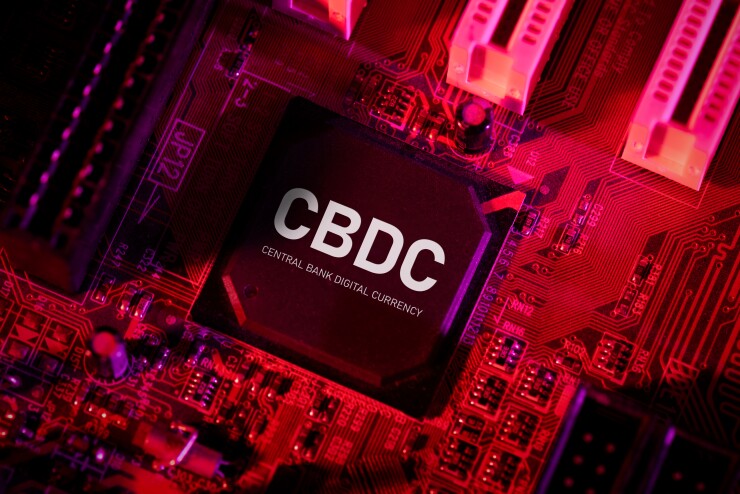
Digital monies promise new functionalities and approaches to processing payments, offering more efficient and transparent transactions. Early adopters may gain significant advantages over incumbents as previous success factors may become less relevant and as settlement efficiency can be achieved without reliance on conventional market conditions. This seems to hold, in particular, for
The internal combustion engine has been the undisputed hallmark of incumbent motor car manufacturers' engineering dominance. Alternative propulsions had simply not been considered seriously for some time. But today, battery powered cars are being offered by car companies few had heard of until a few years ago. New factors like innovation, strategic focus, advanced technologies and market agility now determine success, allowing newcomers to overtake incumbents.
By "digital monies," I mean a digital representation of monies issued in a token format on a blockchain, forming part of monetary aggregates. The combination of a new format and new platform affords more efficient settlement approaches. The programmability of digital monies may enable embedding complex business logic into transactions to meet the most demanding payments needs. New blockchains allow transactions to be processed instantly, provide needed security and preserve confidentiality, which may explain increasing public preference for public chains. Digital monies offer a low-cost extension of the existing payment systems and a critical interface for the emerging token economies.
Digital monies may include, but are not limited to, tokenized central bank money or central bank digital currency, tokenized bank deposits and tokenized money market fund shares.
The U.S. has taken a slow approach to CBDC. For example, the most recent statements on the CBDC question by the Federal Reserve date to late 2022. The participation of the Federal Reserve Bank of New York in the Bank for International Settlements and Institute of International Finance-led Project Agorá may now point to a shift in momentum. However, the U.S. is leading with tokenized deposits, e.g., JP Morgan's Onyx and tokenized money market fund shares, such as Franklin Templeton's on-chain U.S. government money fund.
Elsewhere, the flurry of projects, in particular of CBDC and tokenized deposits, seems to affirm that the prospects for digital monies are strong. The Bank of England's paper explores the impact of digital monies, including CBDC, on the entire payments landscape. U.K. Finance is exploring a Regulated Liability Network approach to test tokenized deposits with a consortium of commercial banks. Project Agora is working with seven central banks on CBDC and tokenized deposits with the expected participation of a large number of commercial banks. The Bank for International Settlements, with the Bank of England, is participating in Project Meridian FX connecting large value payment systems with a CBDC and the foreign exchange market.
Some of the challenges Bank of Guam faces are unique. But its search for vendors and local talent will feel familiar to community banks across the U.S.
The greatest impact of digital monies will likely be where traditional success factors are no longer decisive for settlement and/or where important efficiency gains over existing practices can be produced. Cross-border payments seem particularly prone for disruption.
Cross-border payments rely largely on correspondent banks to make transfers abroad using, at times, long chains as payments progress from one bank to the next until the beneficiary is reached. That process is slow, opaque and costly. Smaller banks often struggle to have sufficient access, as correspondent banks' balance sheets have been shrinking and as active channels, exchanges between two banks, have been declining. It is still often faster to ship a parcel from London to New York than to make a cross-border payment, particularly over the weekend.
The foreign exchange market may be the biggest prize for digital monies. It is the largest financial market with a daily average turnover of $7.5 trillion and a critical component of most economic transactions. Settlement consists of exchanging one currency for another. It is what digital monies are perfectly adapted to do, but without need of the depth and liquidity incumbent settlement arrangements require.
The main currency pairs depend heavily on large network effects and high levels of market concentration to be able to offer efficient settlement. It has led to very few currencies dominating a market where in nine out of 10 foreign exchange transactions the dollar represents either the bought or sold currency. Settlement times are slow for the larger pairs — typically two days. Smaller currency pairs have little liquidity and languish between complicated and slow settlement arrangements often subject to considerable credit and settlement risks and significantly longer settlement times.
Digital monies can offer efficient and riskless settlement even for smaller currencies. Incumbent settlement arrangements may struggle to meet faster settlement times and new payments demands and may find themselves stranded with processes that will increasingly be less competitive. Digital monies could be having their electrical vehicle moment in payments very soon.






